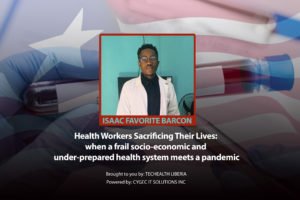Good morning, good afternoon and good evening.
There have now been more than four million cases of COVID-19 across the world.
Over the past week several countries have started lifting stay at home orders and other restrictions in a phased way.
Countries put these stringent measures in place, sometimes called lockdowns, in response to intense transmission.
Many have used the time to ramp up their ability to test, trace, isolate and care for patients, which is the best way to track the virus, slow the spread and take pressure off the health systems.
The good news is that there has been a great deal of success in slowing the virus and ultimately saving lives.
However, such strong measures have come at a cost and we recognize the serious socio-economic impact of the lockdowns, which have had a detrimental effect on many people’s lives.
Therefore, to protect lives and livelihoods, a slow, steady, lifting of lockdowns is key to both stimulating economies, while also keeping a vigilant eye on the virus so that control measures can be quickly implemented if an upswing in cases is identified.
I have previously outlined the six criteria countries need to consider before lifting stay at home orders and other restrictions.
Over the weekend, further guidance was published that outlines the three key questions countries should ask prior to the lifting of lockdowns:
First, is the epidemic under control?
Second, is the healthcare system able to cope with a resurgence of cases that may arise after relaxing certain measures?
Third, is the public health surveillance system able to detect and manage the cases and their contacts, and identify a resurgence of cases?
These three questions can help determine whether a lockdown can be released slowly or not.
However, even with three positive answers, releasing lockdowns is both complex and difficult.
Over the weekend we saw signs of the challenges that may lie ahead.
In the Republic of Korea, bars and clubs were shut as a confirmed case led to many contacts being traced.
In Wuhan, China, the first cluster of cases since their lockdown was lifted was identified.
Germany has also reported an increase in cases since an easing of restrictions.
Fortunately, all three countries have systems in place to detect and respond to a resurgence in cases.
Early serological studies reflect that a relatively low percentage of the population has antibodies to COVID-19, which means most of the population is still susceptible to the virus.
WHO is working closely with governments to ensure that key public health measures remain in place to deal with the challenge of lifting lockdowns.
Until there is a vaccine, the comprehensive package of measures is our most effective set of tools to tackle the virus.
In this vein, new guidance was released over the weekend regarding both school and work places reopening.
On children going back to school, decision makers should reflect on a number of key factors when deciding on whether and how to reopen schools:
First, a clear understanding about current COVID-19 transmission and severity of the virus in children is needed.
Second, the epidemiology of COVID-19 where the school is geographically located needs to be considered.
Third, the ability to maintain COVID-19 prevention and control measures within the school setting.
When reflecting on the decision to reopen schools, the local government should assess the capacity of the schools to maintain infection, prevention and control measures.
===
Last week, I also spoke to the International Labour Organisation (ILO) and the International Organisation of Employers (IOE) about the reopening of work places and how to do this safely.
Over the weekend, WHO issued detailed new workplace guidelines, which recommend all places of work carry out a risk assessment for workers potential exposure to COVID-19. This includes the implementation of measures to prevent the spread of the virus.
Workplaces should develop action plans for prevention and mitigation of COVID-19 as part of their overall business plan.
The plan should also include measures for protecting health, safety, and security in re-opening, closing, and modifying workplaces.
===
Today saw the release of new modeling on HIV by the World Health Organization and UNAIDS.
It highlights the importance of taking immediate steps to minimise interruptions in health services and supplies of antiretroviral drugs during the COVID-19 pandemic.
The group’s worst case scenario, a 6-month disruption of antiretroviral therapy, suggested that there could be 500,000 extra deaths from AIDS-related illnesses, including from tuberculosis, in sub-Saharan Africa over the next year.
This could effectively set the clock back by more than a decade to 2008, when more than 950,000 AIDS deaths were observed in the region.
This is an avoidable worst-case scenario and not a prediction. This model acts as a wake-up call to identify ways to sustain all vital health services.
Despite attention being focused on the COVID-19 pandemic, we must still ensure that global supplies of tests and treatments for both HIV and TB reach the countries and communities that need them most. We should save people from COVID and HIV and other life threatening diseases.
Even relatively short-term interruptions to treatment pose a significant threat to a person’s health and potential to transmit HIV.
===
COVID-19 has exposed the uneven distribution of life-saving medical equipment across the world.
Tomorrow, the Tech Access Partnership will be launched to increase local production of essential health technologies – like masks and ventilators – in developing countries.
This new partnership is another great example of solidarity that builds on the solidarity flights, solidarity trials and Access to COVID-19 Tools Accelerator, which all aim to ensure the latest health innovations are reaching those communities that need them most.
Only together can we get through this pandemic. In national unity and global solidarity.
I repeat, only together can we get through this pandemic. In national unity and global solidarity.
I thank you.
![]()




